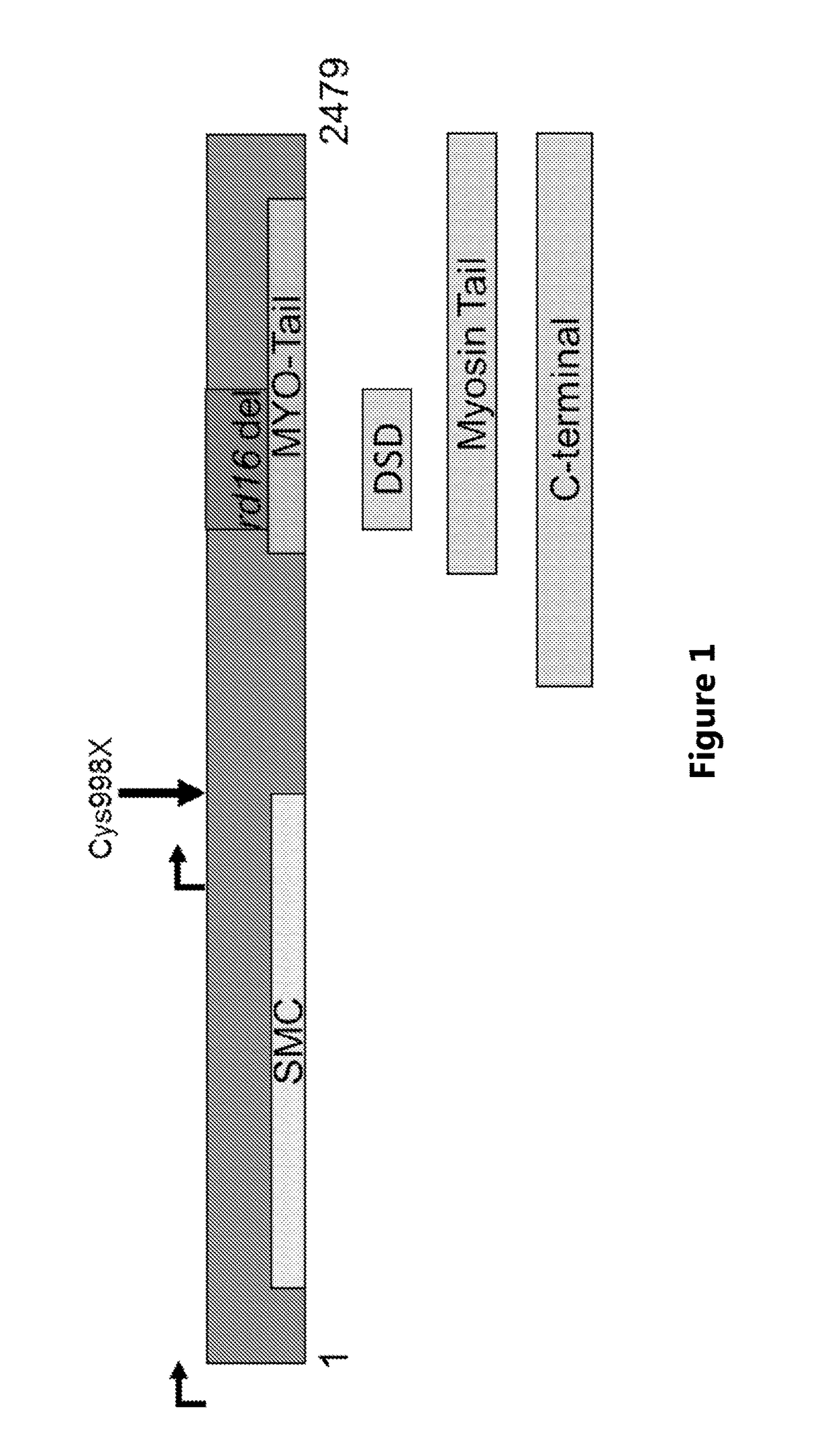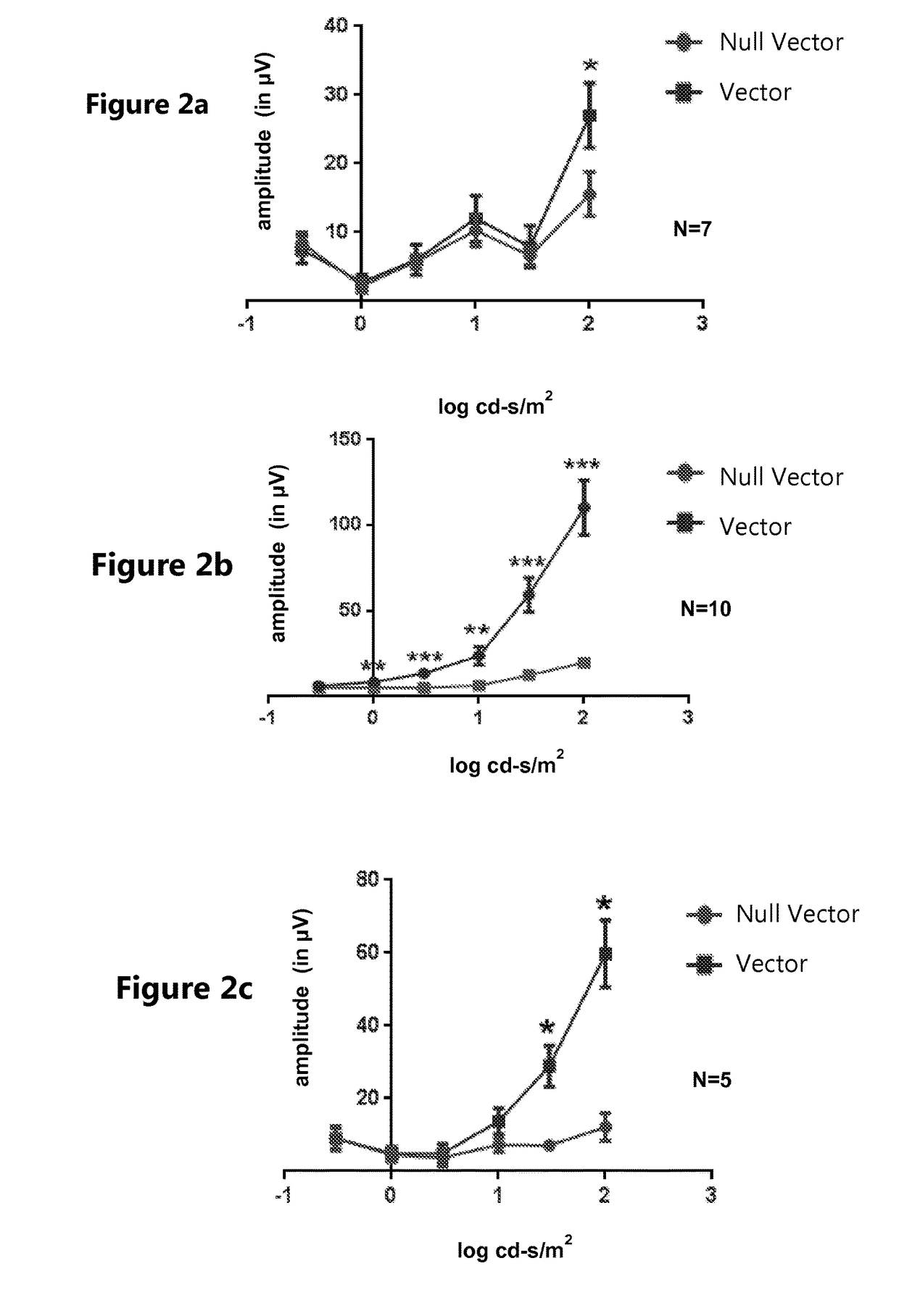Methods and compositions for treating leber congenital amaurosis
a technology of congenital amaurosis and compositions, applied in the field of gene therapy and expression vectors and therapeutics, can solve the problems of inability to treat this disease, difficulty in delivering the correct copy of the cep290 gene into the diseased retina, and inability to correct the mutation of the cep290 gene, etc., to achieve the effect of increasing the visual function of the patien
- Summary
- Abstract
- Description
- Claims
- Application Information
AI Technical Summary
Benefits of technology
Problems solved by technology
Method used
Image
Examples
example 1
n of Therapeutic Effect of Different CEP290 Fragments in Rd16 / Nrl KO Mice by Photopic Electroretinogram (ERG)
[0131]Two-week old mice were administered 8.8e8 AAV vector particles unilaterally through subretinal injection (results of administration of the DSD fragment vector are shown in FIG. 2a, results of administration of myosin tail fragment vector are shown in FIG. 2b, results of administration of c-terminal vector are shown in FIG. 2c). The control eyes were injected with an equal dose of viral particle with no expression cassette (null vector). The mice were followed by ERG 6 or 8 Weeks after Injection. These Data Demonstrate that the Vector Containing the Myosin-Tail CEP290 protein fragment showed the best therapeutic effect.
example 2
n-Tail Vector is Effective within a Wide-Dose Range
[0132]Two week old Rd16 / NrlKO mice were administrated 5e8 to 2e9 vg AAV CEP290 myosin tail fragment vector unilaterally through subretinal injection (FIG. 3a shows 5e8 vg / eye dose; FIG. 3b shows 1e9 vg / eye dose; FIG. 3c shows 2e9 vg / eye dose). The control eyes were injected with equal dose of viral particle with no expression cassette (null vector). These mice were followed by photopic ERG 1 month after injection. These data demonstrate that the vector containing the Myosin-tail CEP290 protein fragment was effective following administration at all doses spanning 5e8 to 2e9 vg AAV vector.
example 3
Therapeutic Effect of Administration of the Myosin-Tail Fragment Vector
[0133]Two week old Rd16 / Nrl knockout (KO) mice were administered 1e9 vg AAV myosin tail CEP290 fragment vector unilaterally through subretinal injection. The control eyes were injected with an equal dose of viral particle with no expression cassette (null vector). These mice were followed by photopic ERG for 8 months after injection. FIG. 4a shows the results of vector administration one month post administration, FIG. 4b shows the results of vector administration at four months post administration, and FIG. 4c shows the results of vector administration at eight months post administration. These data demonstrate that administration of the vector containing the Myosin-tail CEP290 protein fragment was effectively expressed for many months following an initial administration.
PUM
| Property | Measurement | Unit |
|---|---|---|
| diameter | aaaaa | aaaaa |
| pH | aaaaa | aaaaa |
| length | aaaaa | aaaaa |
Abstract
Description
Claims
Application Information
 Login to View More
Login to View More - R&D
- Intellectual Property
- Life Sciences
- Materials
- Tech Scout
- Unparalleled Data Quality
- Higher Quality Content
- 60% Fewer Hallucinations
Browse by: Latest US Patents, China's latest patents, Technical Efficacy Thesaurus, Application Domain, Technology Topic, Popular Technical Reports.
© 2025 PatSnap. All rights reserved.Legal|Privacy policy|Modern Slavery Act Transparency Statement|Sitemap|About US| Contact US: help@patsnap.com



